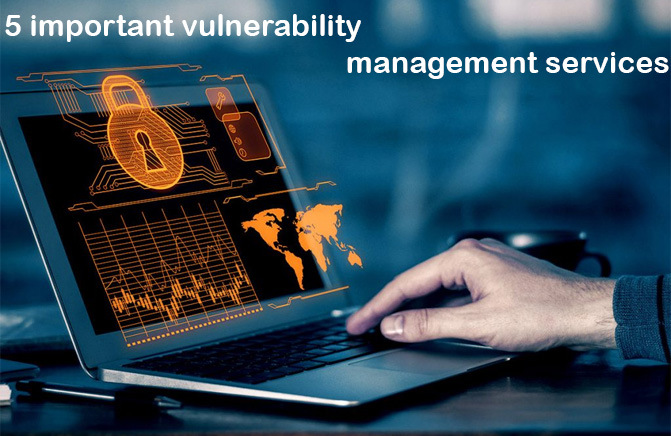Important Vulnerability Management Services
There is no system or software today that is impervious to cyber attacks. Yes, the chances of getting past the security measures may be low, but never zero. As cybersecurity measures get more advanced, so have the hackers. Thus, it’s best not to take chances when it comes to identifying and addressing the vulnerabilities of your system, your network and even your software.
Identifying vulnerable areas and working on them is a continuous process. Regular security patches and updates are your best weapons against unwanted intrusions and phishing activities. The scale at which some of these attacks are taking place lately has directed all eyes to vulnerability management services. What exactly is vulnerability management and, more importantly, how can it help?
What is vulnerability management?
Vulnerability management refers to the detection, assessment, and mitigation of any possible security weaknesses and vulnerabilities in computer systems or software. It also includes reporting threats as and when they have been detected. The process informs the user of the potential risk of using certain software or systems and the best ways to eliminate them.

Here are five critical steps that make up a vulnerability management process:
- Scanning: Vulnerability scanning is the process of using automated tools to identify potential vulnerabilities in an organisation’s network, systems, and applications. The tools scan for known vulnerabilities, misconfigurations, and other security issues that can be exploited by attackers. This must be done regularly to detect new vulnerabilities, whilst ensuring known vulnerabilities are remediated promptly.
- Assessment: Vulnerability assessment evaluates vulnerabilities identified during a scan to determine their severity and the risk they pose. Such assessments may include manual testing, configuration analysis, and other techniques to identify vulnerabilities that automated tools may miss. This helps organisations prioritise which vulnerabilities to tackle first.
- Patch management: Patch management involves the process of identifying, testing, and deploying software patches to address known vulnerabilities in a system, application, or infrastructure. Businesses should have a formal process in place to test and deploy patches quickly to minimise the window of vulnerability and reduce the risk of a successful attack.
- Incident response: Incident response is the process of responding to a security incident. This includes identifying and containing the incident, investigating the root cause, and remediating the vulnerability or issue that led to the incident. Effective incident response requires a well-defined process, trained personnel along with the right tools to detect and respond to incidents quickly.
- Monitoring: Continuous monitoring of the network, systems and applications to detect and respond to security incidents or vulnerabilities is very important. This process involves using tools and techniques such as intrusion detection systems, log analysis, and other monitoring tools. This identifies potential vulnerabilities and cyber threats. Continuous monitoring helps organisations detect and respond to incidents quickly, reducing the fallout of any attack.
The 5 Steps to Improve Vulnerability Management
Effective vulnerability management is critical to protecting an organisation’s assets from security threats. Here are five important steps to improve vulnerability management:
- Develop a comprehensive vulnerability management program: To improve vulnerability management, a comprehensive program must be set up. It must include vulnerability scanning, assessment, patch management, incident response, and continuous monitoring.
- Prioritise vulnerabilities based on risk: Prioritising vulnerabilities based on their potential impact and likelihood of exploitation will help deal with critical situations faster.
- Use automated tools: Automated tools can help companies identify vulnerabilities more quickly and accurately besides deploying patches with greater efficiency.
- Train personnel on vulnerability management: Organisations should provide regular training to personnel on the best practices for vulnerability management. It must consist of aspects such as how to identify and report vulnerabilities, and how to respond to security incidents.
- Regularly review and update policies: Regularly reviewing and updating vulnerability management policies and procedures can help organisations stay up-to-date with the latest technologies. This ensures the effectiveness of their vulnerability management program.
Vulnerability management is an essential aspect of cybersecurity. Without it, an organisation exposes itself to all kinds of attacks that can destabilise operations. MSP Corporation is a leading provider of vulnerability assessment and IT security services in Sydney and all capital cities around Australia. MSP Corporation are experts in this field with countless successes. As a trusted and leading IT provider, MSP Corporation have services designed to keep your data safe and provide you access to secure systems. To know more, you can call MSP Corporation on 1300 554 404 or email sales@mspcorp.com.au.


 Australia's No.1 Managed Service Provider for Quality, Value and Service
Australia's No.1 Managed Service Provider for Quality, Value and Service
